Looking back at NASA's Mars exploration process over the past 20 years
How has the human journey of Mars exploded? What interesting things have we discovered about Red Planet? The following article will help you have a better overview of the journey to explore Mars since the first time NASA brought robots to Mars, two decades ago.
- Elon Musk released 8 photos of the first human journey to Mars in the future
- Did you know: Mars, Venus has rotten egg smell and the Moon smells of gunpowder
- 7 future historic space missions of NASA
On July 4, 1997, the Pathfinder, NASA's first robot landed on the surface of the Red planet with the task of analyzing the atmosphere, climate and rock composition. Since then, there have been 8 more NASA robots exploring Mars.

In 2004, autonomous robotics Opportunity was put on Mars with the task of finding signs of water on the planet.In the picture isOpportunity landing place on the Red planet.

Ancient pit dunes in the Noachis area, one of the oldest on Mars.

In the picture are melting sand dunes by the Observation Ship on Mars Orbit (MRO).MRO was launched on August 12, 2005 to learn about Mars, which is the fourth artificial satellite to operate on the planet.
The video simulates the robot landing process to explore Mars.(Roving Mars.)

The rich shape of sand dunes is created by wind with different direction and strength on Mars.
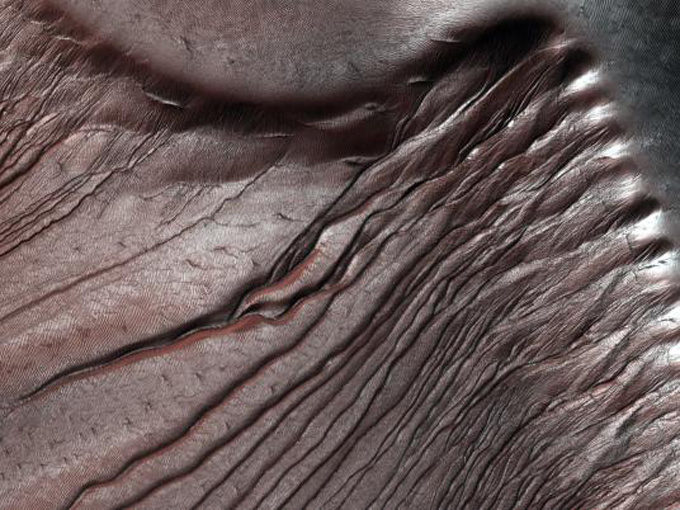
The enchanting beauty of sand dunes due to CO2 gas freezes in the winter in Russel impact crater, located at the southern hemisphere of Mars.High-resolution scientific imaging equipment - HiRISE integrated on the MRO measures the accumulation of frost at this location each fall and their disappearance in the spring.
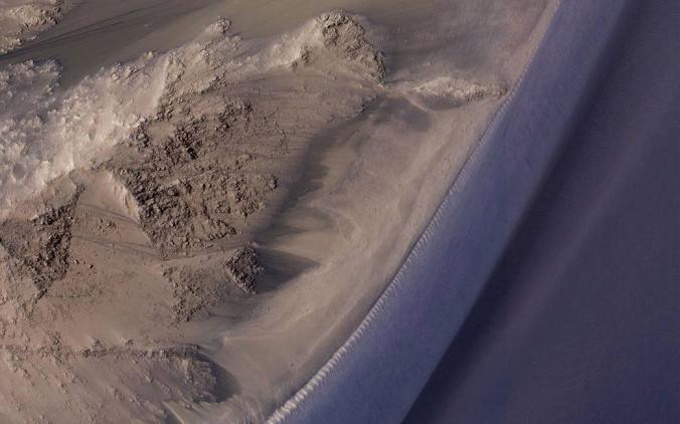
Flows that can be generated by salt water are a common occurrence in Mars in warm months.
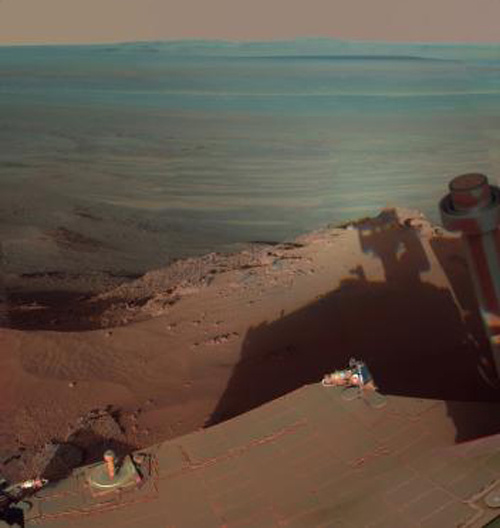
During the four months running on the Greele Haven slope in the north, the autonomous robot Opportunity (landed on Mars on January 25, 2004), captured over 800 images of the neighborhood.

A collision hole of about 30 meters in diameter, located between the large, newly formed rays of Mars
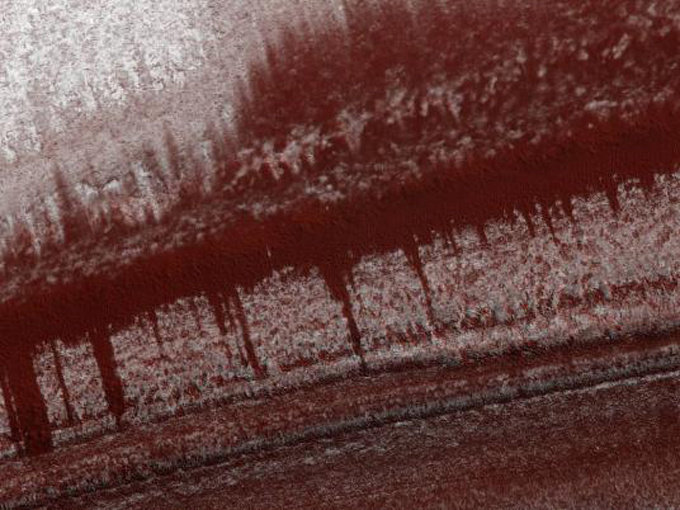
The deposited soil layers, 3 km thick, about 1,000 km in diameter at the North pole of Mars.

The rock drill site at Sharp Mountain was taken by Curiosity autonomous robot, the most modern robot was put on Mars by Mars in August 2012 with 17 cameras, a laser device and a drill blade to find samples of rock formations in the country .
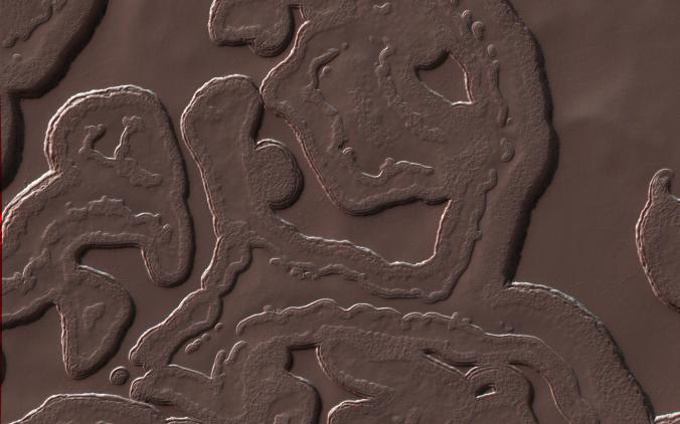
River valleys, cliffs, glaciers and volcanoes . on Mars have similar terrain features on Earth.

High sand dunes, moving about one meter each year on Mars.NASA plans to launch an InSight mission in 2018 and send an autonomous robot in 2020 to continue studying Mars.
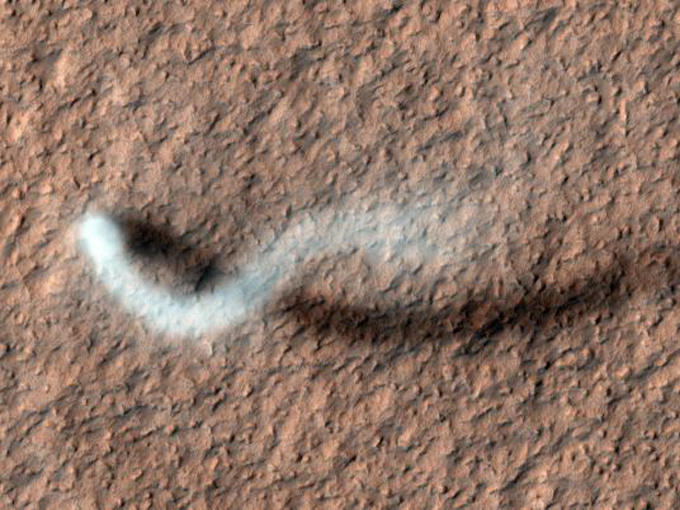
A column of smoke captured in the late spring on the surface of Mars.
You should read it
- The strangest objects ever taken on Mars surprised many
- The answer to the disappearance of water on Mars already exists
- Stunned to discover river fossils on Mars
- Why are microorganisms living 'so tough' on Earth but still hard to survive on Mars
- Details of the plan to turn a successful Mars man for only $ 100,000 by Elon Musk
- There are major changes in the atmosphere of Mars
- Find strong evidence of life on Mars
- NASA 'Mars' helicopter model is almost ready for the journey to conquer Red Planet
May be interested
- Astronomers have discovered 'strange signals' that can come from a star located 11 light years away.
 recent astronomers have discovered 'strange signals' that can come from a star located 11 light-years away.
recent astronomers have discovered 'strange signals' that can come from a star located 11 light-years away. - Strange weather phenomena can only be seen in the universe
 the vast universe contains countless mysteries that people cannot discover. in which there are extremely strange phenomena that we cannot see on earth like glass storms, crystal rain or mercury clouds, super heat waves ...
the vast universe contains countless mysteries that people cannot discover. in which there are extremely strange phenomena that we cannot see on earth like glass storms, crystal rain or mercury clouds, super heat waves ... - Discovering the planet has an orbit of 4.5 hours, where people can live 150,000 years
 the new epic 228813918 b planet has been discovered by international scientists to have time to complete an orbit around its star in just 4.5 hours, so one day on earth is equivalent to 5 years on the planet.
the new epic 228813918 b planet has been discovered by international scientists to have time to complete an orbit around its star in just 4.5 hours, so one day on earth is equivalent to 5 years on the planet. - The most anticipated astronomical events of 2017
 let's take a look at the time and place of observing the astronomical events that will happen in 2017 that you should not miss.
let's take a look at the time and place of observing the astronomical events that will happen in 2017 that you should not miss. - Find out how to weigh black holes based on galaxy spiral arms
 with this calculation, from astronomers to students can calculate the mass of the black hole.
with this calculation, from astronomers to students can calculate the mass of the black hole. - Listen to the strange sound obtained from planets in the Solar System
 these are the strange sounds that nasa spacecraft get from jupiter, saturn, earth and the solar system edge.
these are the strange sounds that nasa spacecraft get from jupiter, saturn, earth and the solar system edge.






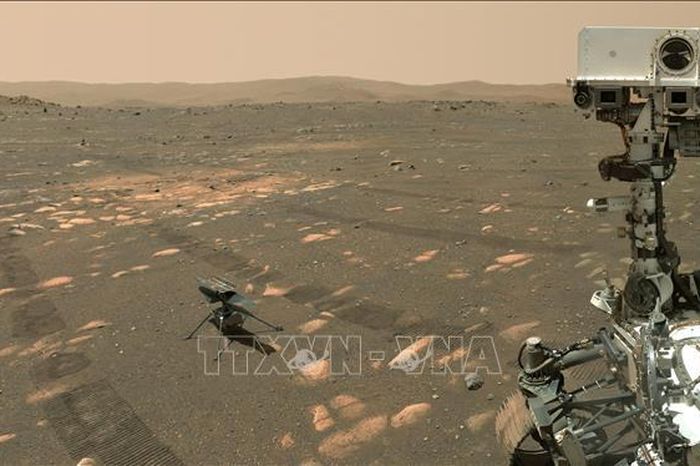 The Ingenuity exploration helicopter on Mars sends final information back to Earth
The Ingenuity exploration helicopter on Mars sends final information back to Earth NASA's spacecraft is about to bring the names of more than 11 million people to Mars
NASA's spacecraft is about to bring the names of more than 11 million people to Mars NASA 'Mars' helicopter model is almost ready for the journey to conquer Red Planet
NASA 'Mars' helicopter model is almost ready for the journey to conquer Red Planet NASA exploration robots capture the surface of Mars like Earth
NASA exploration robots capture the surface of Mars like Earth Mars: Overview of the 4th planet in the solar system
Mars: Overview of the 4th planet in the solar system